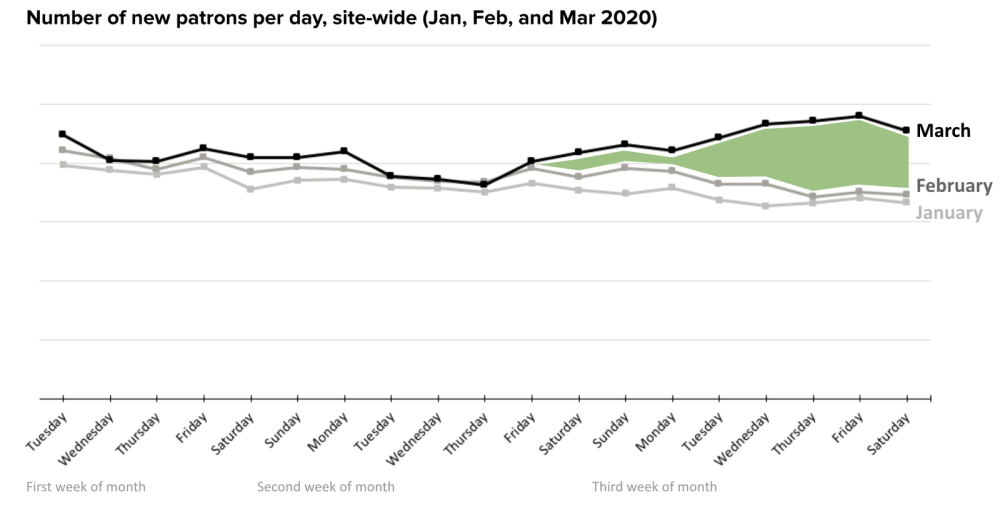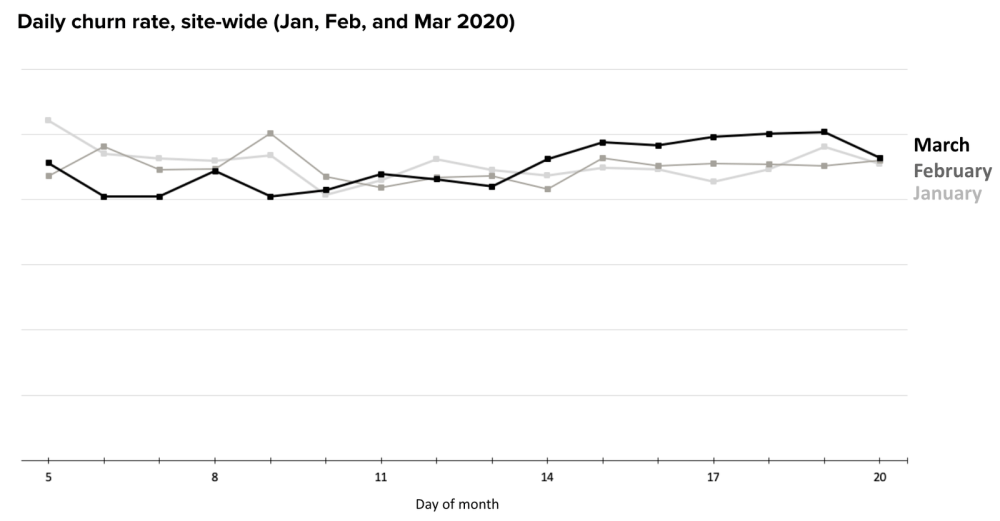Patreon – From Followers to Paycheck

Patreon offers alternate income sources to creators during COVID-19
Introduction
With shelter in place, we are confined to our living spaces more than ever. The average screen time is way up, and -unfortunately- so are unemployment rates. In this precarious situation creative professionals, crafty entrepreneurs, and aspiring performers are finding new ways to make cash: subscription memberships.
What is the creator industry anyway?
Pre early 2000s, the path to becoming a published creator was long: Get a degree in libareal arts, laborfully craft content (e.g. manuscript or book), find an agent, potentially get chosen by a publisher, survive the editorial process, and *maybe* get your content in front of your new audience after landing in bookstores, theaters, CD shops. The story used to be almost the same across the media. No matter if you were a writer, actor, musician, or visual artist there were gatekeepers between you and your audience.
Then, with the advent of mobile compute, something arguably magical: Internet bandwidth became commoditized. Recording equipment shrunk to the size of our phones. And online platforms like YouTube provided the audience. Now everyone could be a creator and audiences of scale. Old media found new talent (e.g. Justin Bieber was ‘discovered’ on YouTube) and content previously considered ‘niche’ garnered mainstream attention (The gamer PewdiePie has over 100M subscribers watching him play video games).
While few individuals reach stardom, the creator economy has become an important part of the US economy: According to a 2018 case study by Re:Create, nearly 17M US american earned income through platforms like Instagram, Twitch, Amazon Publishing, and Youtube. Cumulatively they garnered $6.8B income in 2018. Most commonly these creators make their content available to users for free. Monetization happens via ad placements, affiliate sales (e.g. “use my coupon code for $5 off this bronzer) or sponsorship (e.g. “watch me use this expensive shampoo”).
Recently subscription based models have become popularized. Most notbaly, Twitch (gaming), OnylFans (pornography), and Patreon (everything else) dominate the landcape. Creators previously had limited control over their audience experience (read: spammed with ads) or were at the whim of corporate sponsors. Through paid subscriptions they can more directly interact with their fanbase and – more importantly – directly charge them.
What is Patreon?
In short, Patreon allows creators – from musicians over artists to adult performers, to offer paid subscriptions to their content. Creators set their own price and decide what content they want to post. Patreon handles audience management, payment pricessing and moderate level of curation (e.g. no hardcore pronography – unlike OnlyFans) and takes a 5% cut of the creators earnings. Patreon is home to thousands of famous blog writers, podcasters, visual artists, gaming communities, and more.
How has the company been doing under COVID?
According to Maura Church, head of data science at Patreon, signups have been thriving since the advent of COVID-19. The company registered 50K new creators in March, bringing the total number to an all time high of 171,426. Many creators are looking to Patreon as a replacement income as their live-gigs are cancelled indefinitely.
Simultaneously, creators are successfully converting their existing audiences from free channels Instagram, TikTok, and DeviantArt to paid subscriptions. Patron growth rate was up by 36% over February. At this point the platform serves over 4M paying users across 180 countries.
“Fans are turning to Patreon to support creators during this tough time”. – Maura Church, Head of Data Science @ Patreon
Over the span of 2019, the company paid out $500M to creators. While most of them earn nominal amounts, some high-profile creators earn tens of thousands of dollars. There are no updated payout numbers available for March. But according to Church, “Patreon exists to provide a stable, reliable source of income for creators, and that’s especially important in this time of global uncertainty.”
Is its growth sustainable or only short-lived?
While most metrics are trending upwards, Patreon is experiencing slightly higher churn rates among patrons for the month of March. COVID-19 is part of a possible explanation: Not only creators are seeing their income sources getting crushed. With subscribers feeling financial strain, they are more likely to decrease discretionary spend on workshops, communities, and artwork.
That said, I believe in the future success of the company. COVID-19 may have just given many creators the much needed impetus to get started on a new and curious career path: The biggest hurdle for the successful creator (and by extension, the company) is getting started. Creating content, putting it out there, and garnering a minimum income-stream to keep going are required for Patreon to retain their creator base. With many creators losing their primary source of income, getting started has suddenly become a necessity. Surely, many will return their attention to other sources of income once COVID-19 subsides. But a sizable number of quality creators will find their way in an interesting position: Their alternate income stream on Patreon may have become more lucrative and convenient than their previous gigs. As the economy opens back up, Patreon will certainly lose creators. Arguably many of them will be considered good riddance, leaving the platform with a high quality batch of newly minted artists and entrepreneurs.
On the user side, the experience just makes. Instead of being inundated by advertisements, they get to enjoy their favorite artists by paying them directly – pretty equivalent to our analog experience. The relationship feels intimate and makes users part of the community. All in all, COVID-19 will be a curious kick-starter for Patreon. Fingers crossed that they can keep the momentum as the pandemic subsides.
Sources
Over 30K creators joined PAtreon this month, as COVID-19 outbreak spreads
Patreon lays off 13 percent of its staff
Forbes, People Are Increasingly Turning To Patreon To Make Money As Coronavirus Job Losses Mount
From Creatives to Creators: The Evolution of an Industry
Patreon Now Has Over 3 Million Patrons, Expects to Pay $500M to Creators in 2019






Interesting article. It makes sense that Patreon has seen an increase in creators joining as I suspect some are trying to recover from an unexpected job loss. It’s interesting to then see if demand matches – because creators aren’t the only ones feeling financially pinched, consumers are too. Subscriptions can seem like a luxury right now, though there’s also been a push to “support small business” which may be helping here. I wonder how Patreon as a digital platform will use these changes in the long term – for example, I wonder if there’s an opportunity to emphasize their brand and contribution in supporting small businesses in this economy. They don’t seem to have introduced any COVID specific features or options. Are they hoping new creators joining because of COVID could STAY post-pandemic? Are they banking on growing that supply (and then demand when COVID ends)? I’m not sure.
Thank you for the great post! I agree that bringing successful creators on the platform is a key factor for the company. While I think Patreon’s business model is interesting, I’m wondering how big addressable market can be since, as mentioned in the article, end consumers have other free media to get to know and enjoy some creative contents such as Youtube for musicians and Instagram for artists (and creators still receive money based on the number of views). Given the financial burden of subscription model for end customers, I believe that Patreon’s target customers might be limited to fanatic fan for specific creators and high net worth individuals who want to help these creators. So, I agree that bringing successful creators who can bring many fans on the platform is fundamental.